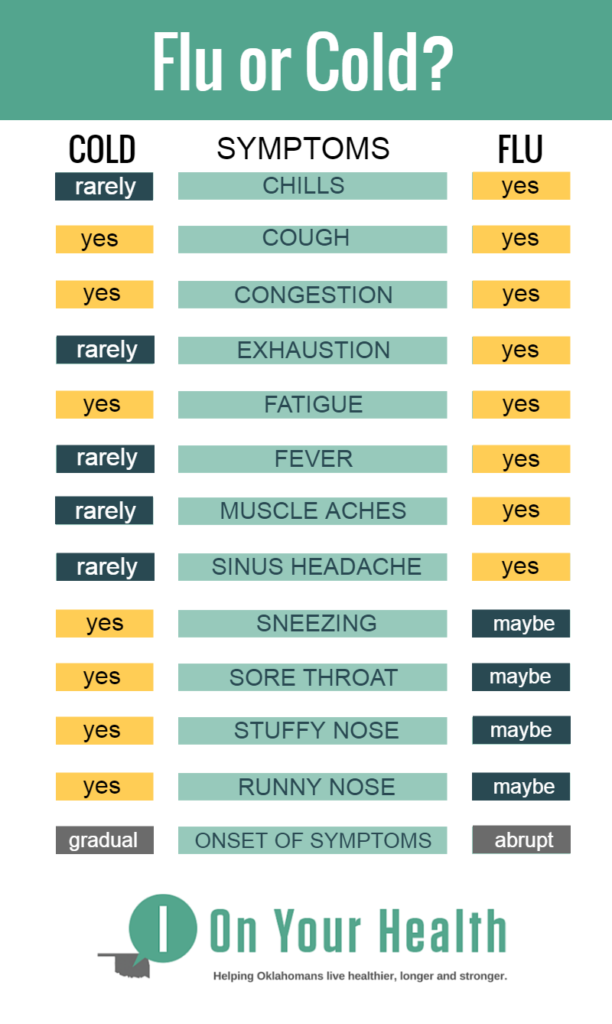Oklahoma and the Flu
30 September 2016
Posted in

Sneezing, sniffling and coughing -- weather changes often bring an influx of ailments, but how do you know when it’s more serious than a common cold? Influenza results in more than 200,000 hospitalizations and 36,000 deaths in the United States annually, and infects up to 20 percent of the population every year.
Spread primarily through coughs and sneezes, cases of the flu can range from mild to severe. While the flu normally peaks in February, flu activity usually begins around October and can last as late as May. So what are your best methods to prevent the flu?
How to prevent the flu
If you’d prefer to remain healthy and happy this season instead of feeling ill (and who doesn’t) the Centers for Disease Control and Prevention recommends a yearly flu vaccine as your best course of action. Every year the strain of the flu virus changes, so even if you had a flu shot last year, you’ll have to get a new one this year to combat the current strain of the disease. The CDC recommends everyone older than 6 months receive a flu shot before the end of October, especially those who may have a high risk of a severe reaction to the illness. This may include young children, pregnant women, and people with certain health conditions. If you are not sure if you are a high-risk patient, ask your doctor. Chronic medical conditions also can increase your risk of influenza complications. Examples include:- Asthma
- Cancer or cancer treatment
- Chronic obstructive pulmonary disease (COPD)
- Cystic fibrosis
- Diabetes
- HIV/AIDS
- Kidney or liver disease
- Obesity
- Avoid close contact with individuals suffering from the flu.
- Wash your hands often with soap and warm water.
- Avoid touching your mouth, nose, and eyes to prevent the spread of germs.
- Clean and disinfect surfaces in your house and workplace often to kill germs.
- Cover your nose and mouth with a tissue when you cough or sneeze, or cough into your elbow if a tissue is not available.


